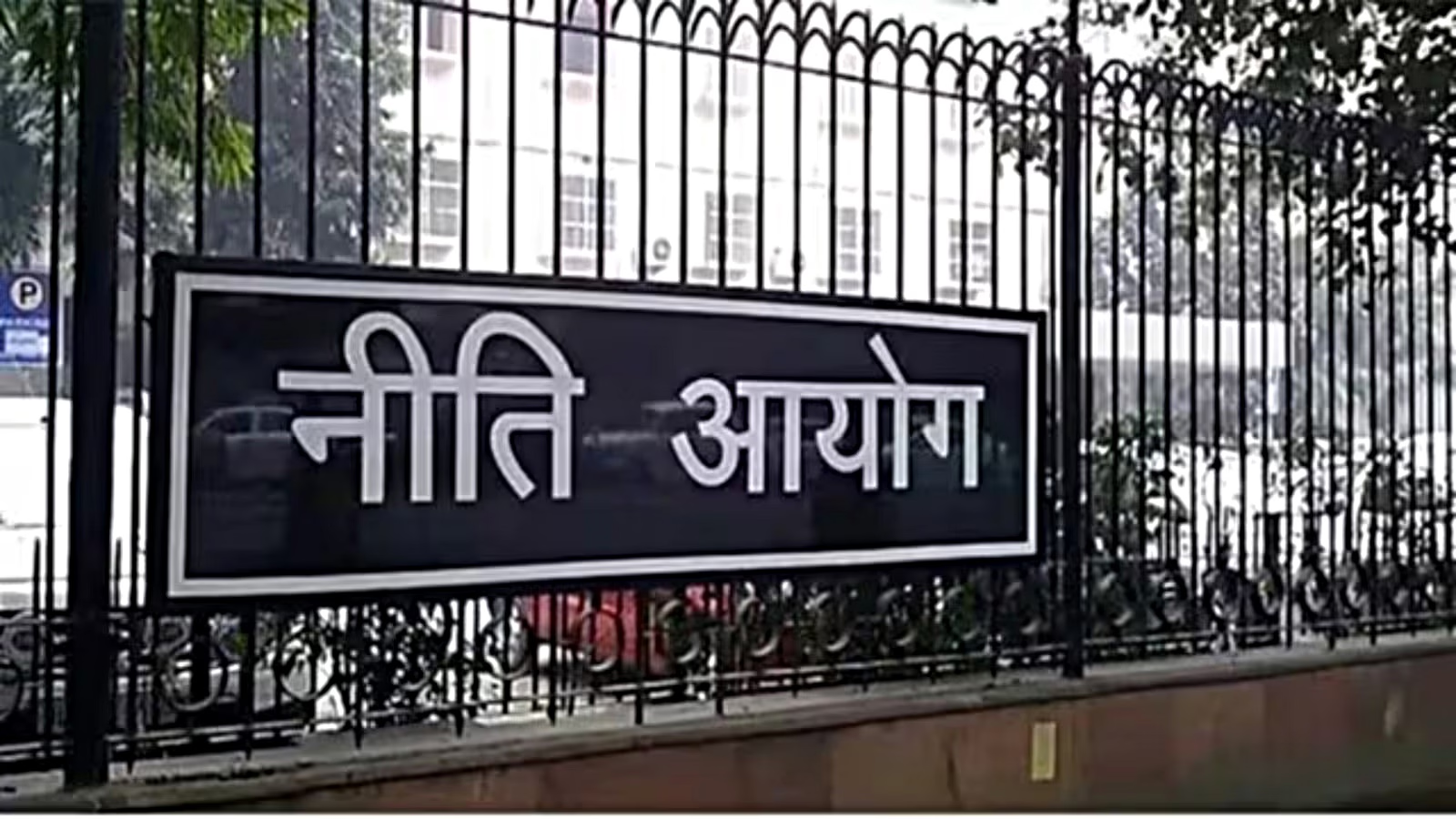- Courses
- GS Full Course 1 Year
- GS Full Course 2 Year
- GS Full Course 3 Year
- GS Full Course Till Selection
- Online Program
- GS Recorded Course
- NCERT (Recorded 500+ Hours)
- Polity Recorded Course
- Geography Recorded Course
- Economy Recorded Course
- AMAC Recorded Course
- Modern India, Post Independence & World History
- Environment Recoded Course
- Governance Recoded Course
- Science & Tech. Recoded Course
- International Relations and Internal Security Recorded Course
- Disaster Management Module Course
- Ethics Recoded Course
- Essay Recoded Course
- Current Affairs Recoded Course
- CSAT
- 5 LAYERED ARJUNA Mentorship
- Public Administration Optional
- ABOUT US
- OUR TOPPERS
- TEST SERIES
- FREE STUDY MATERIAL
- VIDEOS
- CONTACT US
Niti Aayog Proposes Concessional Loan Scheme For Medium-Sized Firms
Niti Aayog Proposes Concessional Loan Scheme For Medium-Sized Firms

- In May 2025, NITI Aayog has proposed a concessional loan scheme specifically for medium-sized enterprises in India.
- Because that these firms face higher capital costs compared to small and large enterprises.
- This comes after the Union Budget 2025 revised the definition of medium enterprises, expanding their coverage and highlighting the need for targeted policy support.
Revised Definition of Medium Enterprises (From April 1, 2025):
|
Revision in Classification Criteria for MSMEs |
Investment and turnover limits were enhanced to 2.5 and 2 times respectively.
|
Key Proposals:
1. Concessional Loan Scheme :
- Medium enterprises receive fewer priority sector loans and face ~4% higher interest rates than large firms.
- Proposal for a dedicated financing scheme under the Ministry of MSME:
- Loan cap at Rs 25 crore, max Rs 5 crore per request
- Introduction of a Medium Enterprise Credit Card with a pre-approved limit of up to Rs 5 crore at market-aligned interest rates.
2. Boosting R&D and Quality Testing :
- Medium firms contribute 81% of MSME R&D investment but lack sufficient funding.
- Recommend reserving 25-30% of the Self-Reliant India Fund exclusively for medium firms’ R&D.
- Suggest an EU-style mechanism where the government identifies R&D gaps and invites proposals from medium firms.
- Expand Micro & Small Enterprises Cluster Development Programme (MSE-CDP) to medium firms for access to shared testing facilities, reducing operational costs and certification delays.
3. Formal Employment and Skill Development
- Medium firms employ on average 89 people, more than small (19) and micro (6) enterprises.
- Formal employment encourages firms to invest in employee training.
- India’s skilled labor availability is 55%, lower than developed economies (81-88%).
- Recommend:
- Real-time skill mapping via MSME Sampark Portal
- Expansion of skill schemes like Entrepreneurship and Skill Development Programme (ESDP)
- Subsidized, customized training aligned with evolving technologies
Importance of Medium Enterprises:
- Constitute only 0.3% of India’s 6 crore MSMEs but are major contributors to employment, R&D, and export competitiveness.
About NITI Aayog :
- Full Form: National Institution for Transforming India
- Established: January 1, 2015 (replaced Planning Commission)
- Purpose: Policy think tank focusing on inclusive development, cooperative federalism, and sustainable growth
- Leadership: Chaired by the Prime Minister; members include Chief Ministers, Union Ministers, experts, and state representatives.
Key Functions of NITI Aayog
- Policy Formulation: Develops long-term, strategic, and sector-specific policies for economic growth.
- Cooperative Federalism: Facilitates collaboration between Centre and States in policy-making and implementation.
- Monitoring & Evaluation: Tracks progress and evaluates outcomes of government schemes.
- Think Tank Role: Provides knowledge, innovation, and strategic inputs for national challenges.
Composition
- Chairperson: Prime Minister of India
- Vice Chairperson: Appointed by PM
- Governing Council: PM, Chief Ministers of States & UTs, Lt Governors
- Ex-Officio Members: Union Ministers nominated by PM
- Full-Time Members: Experts in economics, science, etc.
- Special Invitees: Domain specialists
- CEO: Appointed by PM; manages daily operations
- Regional Councils: Address regional issues, chaired by PM or nominee
- Supporting Cells: Specialized units (e.g., Circular Economy Cell, North East Forum)
Objectives
- Promote inclusive development and address weaker sections
- Foster cooperative federalism and stakeholder engagement
- Ensure credible, bottom-up planning from villages to states
- Design long-term policies with regular monitoring
- Encourage innovation and technology upgradation
- Establish a state-of-art resource centre for governance research
Foundational Pillars
- Pro-People Orientation
- Proactivity
- Participation
- Empowerment
- Inclusivity
- Equality
- Transparency
Significance
- Promotes cooperative and competitive federalism through collaboration and state rankings
- Drives strategic policy formulation across sectors
- Oversees India’s progress on Sustainable Development Goals (SDGs)
- Fosters an ecosystem of innovation via programs like Atal Innovation Mission
- Builds capacity in states for policy implementation
- Ensures inclusive growth targeting marginalized communities
- Advocates for transparency and accountability in governance
- Facilitates inter-sectoral coordination for complex challenges
NITI Aayog vs Planning Commission
|
Aspect |
NITI Aayog |
Planning Commission |
|
Nature |
Advisory think tank |
Extra-constitutional body |
|
Established |
2015 |
1950 |
|
Approach |
Bottom-up, participatory |
Top-down |
|
Role of States |
Active participants |
Limited, passive |
|
Policy Imposition |
No authority to impose policies |
Authority to impose policies |
|
Funding Authority |
No fund allocation power |
Allocated funds to states |
|
Membership |
Diverse experts and representatives |
Mainly bureaucrats |
|
Federalism Focus |
Emphasizes cooperative federalism |
Not a primary focus |
|
Key Functions |
Policy formulation, innovation, SDG monitoring |
Five-Year Plans, fund allocation |
|
Governance Structure |
PM-led with Chief Ministers, experts |
PM-led bureaucratic |
Key Initiatives
|
Initiative |
Description |
|
Atal Innovation Mission |
Promotes innovation & entrepreneurship (Atal Tinkering Labs, Incubators) |
|
National Data & Analytics Platform |
Facilitates open government data access and analysis |
|
Aspirational District Programme |
Transforms backward districts via monitoring and partnerships |
|
Poshan Abhiyan |
Improves nutritional outcomes for children and women |
|
E-Amrit Portal |
One-stop info portal for electric vehicles |
|
LiFE |
Promotes sustainable, eco-friendly living |
|
Shoonya Campaign |
Enhances air quality through EV adoption in ride-hailing and deliveries |
Important Indices by NITI Aayog
- SDG Index: Monitors progress towards Sustainable Development Goals
- Composite Water Management Index: Guides states on water security
- Health Index: Ranks states on health performance
- Agriculture Marketing & Farmer-Friendly Reform Index: Evaluates farm reforms implementation
- India Innovation Index: Assesses states’ innovation readiness
Limitations and Challenges
- Advisory role limits direct impact; no fund allocation authority
- Centralised structure with limited local adaptability
- Variable cooperation from states
- Bureaucratic delays and inconsistent data availability
Political risks and lack of enforcement or accountability mechanisms





